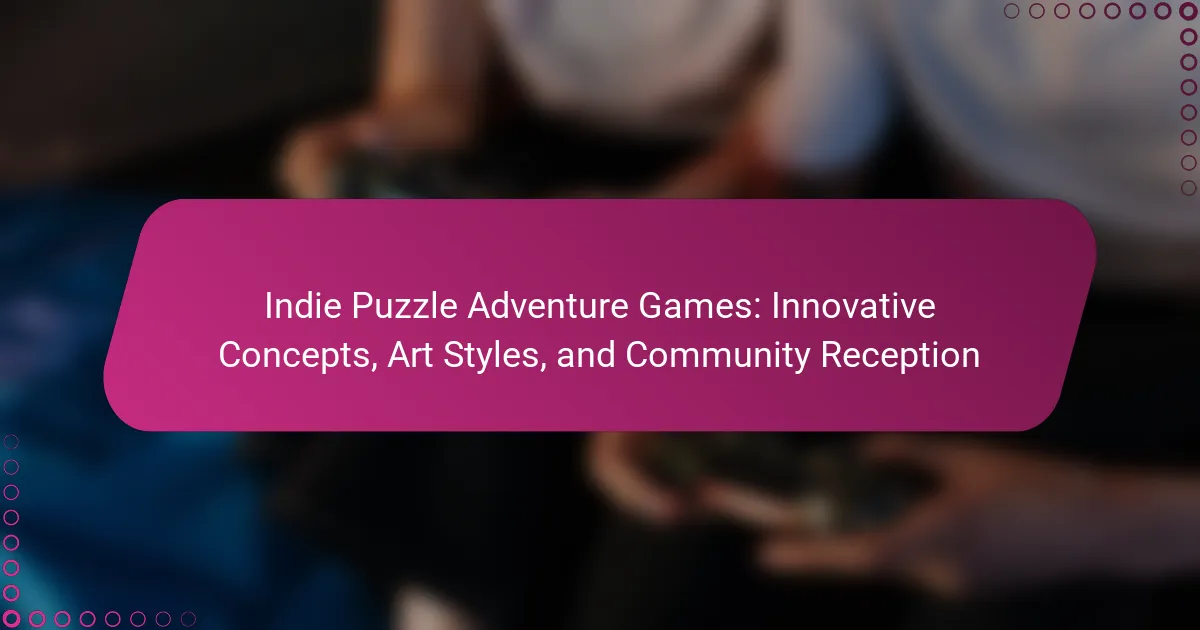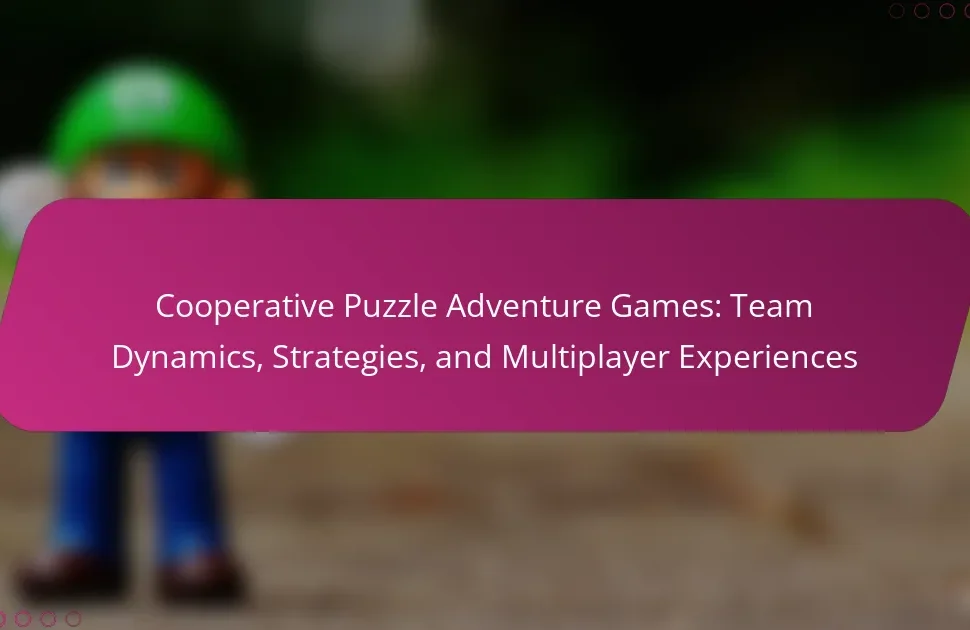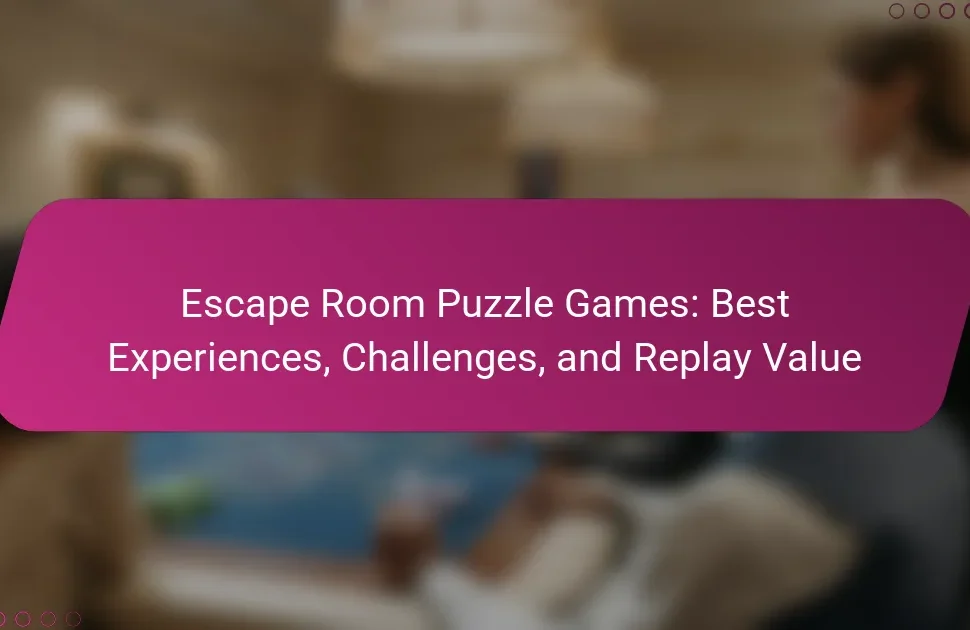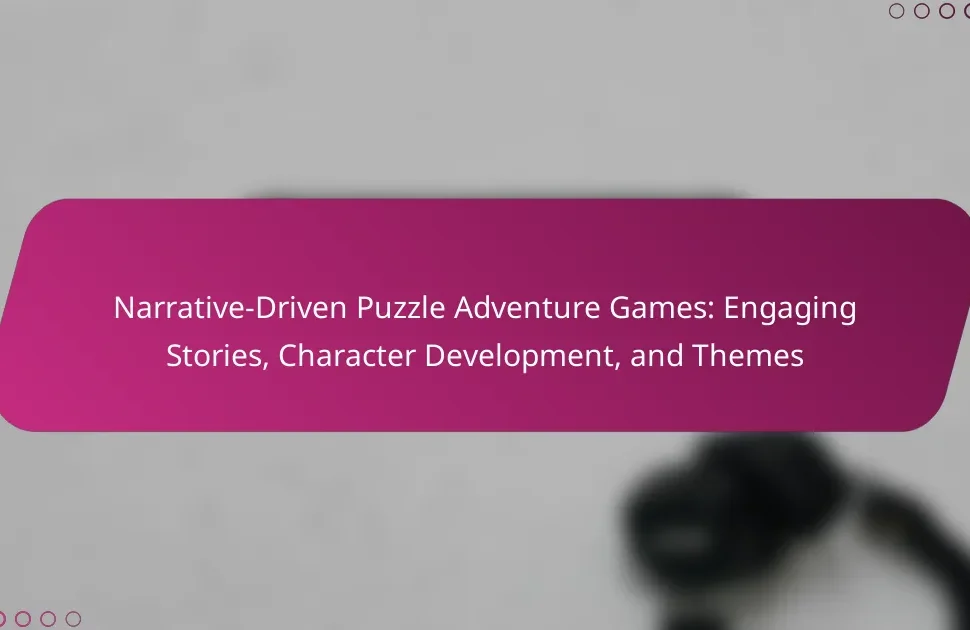Indie puzzle adventure games captivate players with their innovative gameplay mechanics, unique art styles, and emotional narratives. These games prioritize exploration and creative problem-solving, fostering deeper player engagement. Community reception significantly influences their success, shaping ongoing development and player loyalty. Understanding regional preferences further enhances their appeal in diverse markets.
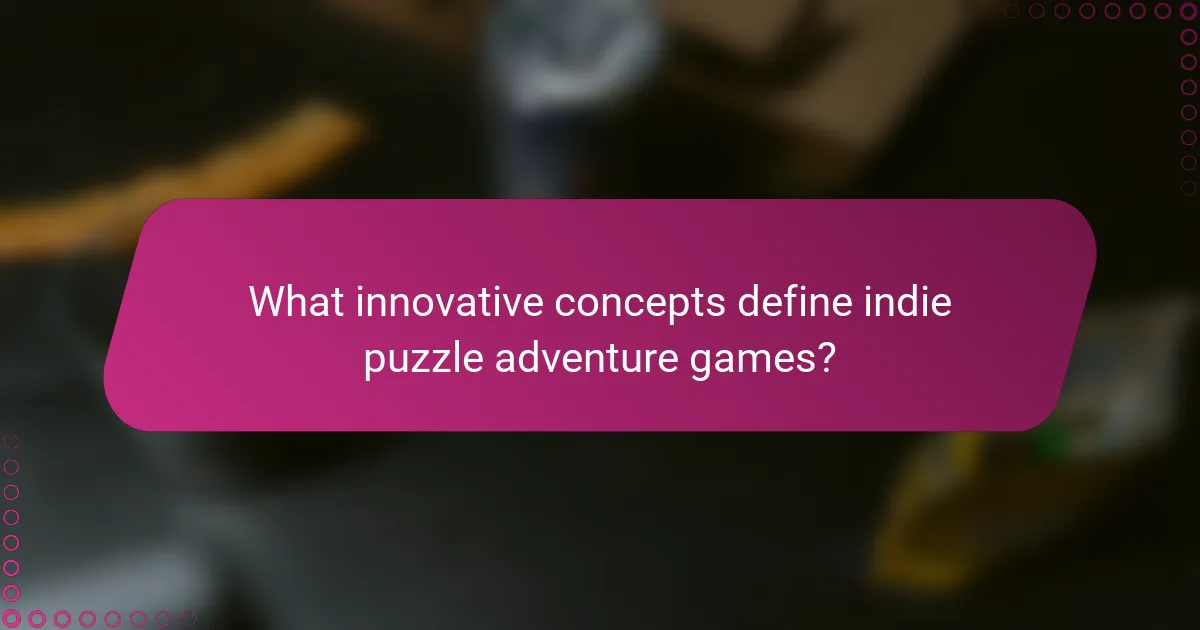
What innovative concepts define indie puzzle adventure games?
Indie puzzle adventure games are defined by innovative concepts such as unique storytelling, immersive environments, and unconventional mechanics. These games often prioritize player exploration and emotional engagement over traditional gameplay structures.
Unique art styles further distinguish these games, often featuring hand-drawn visuals or pixel art that enhance the narrative experience. Community reception plays a crucial role, where feedback shapes ongoing development and fosters a strong player community.
Emphasis on puzzles that require creative thinking rather than rote solutions is a rare attribute that appeals to players seeking deeper engagement. As a result, indie puzzle adventure games continue to push boundaries, attracting diverse audiences with their fresh perspectives.
How do gameplay mechanics enhance puzzle-solving experiences?
Gameplay mechanics significantly enhance puzzle-solving experiences by introducing unique challenges and interactions. These mechanics create engaging environments that encourage critical thinking and creativity. For instance, innovative physics-based puzzles require players to manipulate objects in specific ways, deepening immersion. Additionally, narrative integration within gameplay mechanics fosters emotional connections, making the puzzle-solving process more rewarding. Community feedback often highlights how these mechanics contribute to replayability, as players seek to explore different solutions and approaches.
Which narrative techniques are commonly used in these games?
Indie puzzle adventure games often utilize narrative techniques such as environmental storytelling, character-driven plots, and interactive dialogue. These methods enhance immersion and emotional engagement. For example, players uncover the story through exploration and puzzle-solving, creating a unique narrative experience.
What role does player choice play in shaping game outcomes?
Player choice significantly influences game outcomes in indie puzzle adventure games by allowing players to shape their narrative experience and solve challenges creatively. This autonomy fosters engagement and enhances replayability. Unique mechanics, such as branching paths or multiple solutions, empower players to impact storylines, character relationships, and game endings. As a result, diverse player choices lead to varied experiences, reinforcing community discussions and shared strategies.
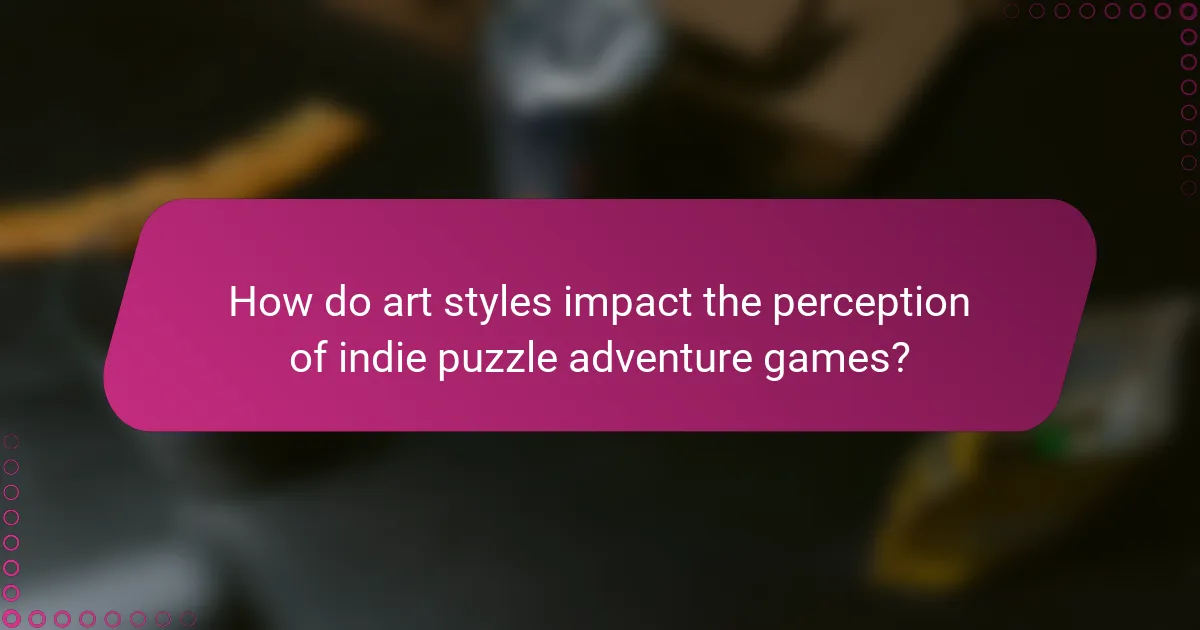
How do art styles impact the perception of indie puzzle adventure games?
Art styles significantly influence the perception of indie puzzle adventure games by shaping player immersion and emotional engagement. Unique visual aesthetics can create distinct atmospheres, enhancing storytelling and gameplay experiences. For example, a minimalist art style may evoke feelings of solitude, while vibrant, detailed graphics can foster a sense of wonder. Additionally, the art style often reflects the game’s themes, reinforcing narratives and character development. Community reception varies, as players may prefer certain styles that resonate with their personal tastes, impacting overall game popularity and success.
What are the most popular visual aesthetics in this genre?
The most popular visual aesthetics in indie puzzle adventure games include pixel art, hand-drawn graphics, and minimalist designs. These styles enhance gameplay by creating immersive environments. Pixel art appeals due to its nostalgic charm, while hand-drawn graphics offer unique artistic expressions. Minimalist designs focus on clarity, allowing players to engage with puzzles without distraction. Each aesthetic contributes to the overall community reception, influencing player preferences and emotional connections.
How does the art style influence player engagement and immersion?
Art style significantly enhances player engagement and immersion in indie puzzle adventure games. Unique visual aesthetics create a distinct atmosphere, drawing players into the game world. This connection fosters emotional investment, as players relate to the art’s themes and narratives.
For example, vibrant colors and whimsical designs can evoke joy and curiosity, while darker palettes may instill tension or mystery. Such emotional responses deepen immersion, encouraging exploration and problem-solving.
Additionally, innovative art styles often reflect game mechanics, creating a cohesive experience. When players understand game logic through visual cues, they engage more deeply with puzzles.
Community reception also influences engagement; players often share and discuss unique art styles, enhancing social interaction and collective experiences. This shared appreciation can lead to increased interest and prolonged gameplay.

What are the community’s perceptions of indie puzzle adventure games?
The community generally perceives indie puzzle adventure games as innovative and artistically rich. Players appreciate unique gameplay mechanics and diverse art styles. Many value the emotional narratives that often accompany these games. Indie developers are praised for their creativity and willingness to experiment, leading to a loyal fan base. Community discussions frequently highlight the importance of storytelling and immersive environments in enhancing player experiences.
How do player reviews shape the success of these games?
Player reviews significantly influence the success of indie puzzle adventure games by shaping community perception and driving engagement. Positive reviews enhance visibility, encouraging new players to try innovative concepts and unique art styles. Conversely, negative feedback can deter potential players, impacting sales and community support. Developers often adapt gameplay based on player input, fostering a responsive relationship that enhances overall game quality and player satisfaction. This dynamic interaction creates a feedback loop, where community reception directly affects future projects and the longevity of existing titles.
Which platforms are most favored by players for indie puzzle adventures?
Players favor platforms like Steam, Nintendo Switch, and itch.io for indie puzzle adventures. These platforms offer diverse games, innovative concepts, and strong community engagement. Steam leads with extensive user reviews and regular updates, while Nintendo Switch provides portability, enhancing gameplay experience. Itch.io supports indie developers directly, promoting unique titles often overlooked elsewhere.
What role does community feedback play in game development?
Community feedback is crucial in game development, especially for indie puzzle adventure games. It shapes gameplay mechanics, art styles, and overall player experience. Developers often utilize feedback to refine innovative concepts, ensuring they resonate with their audience. Engaging with the community fosters a collaborative environment that can lead to unique attributes, enhancing the game’s appeal. Moreover, positive community reception can significantly impact a game’s success, influencing marketing strategies and future projects.
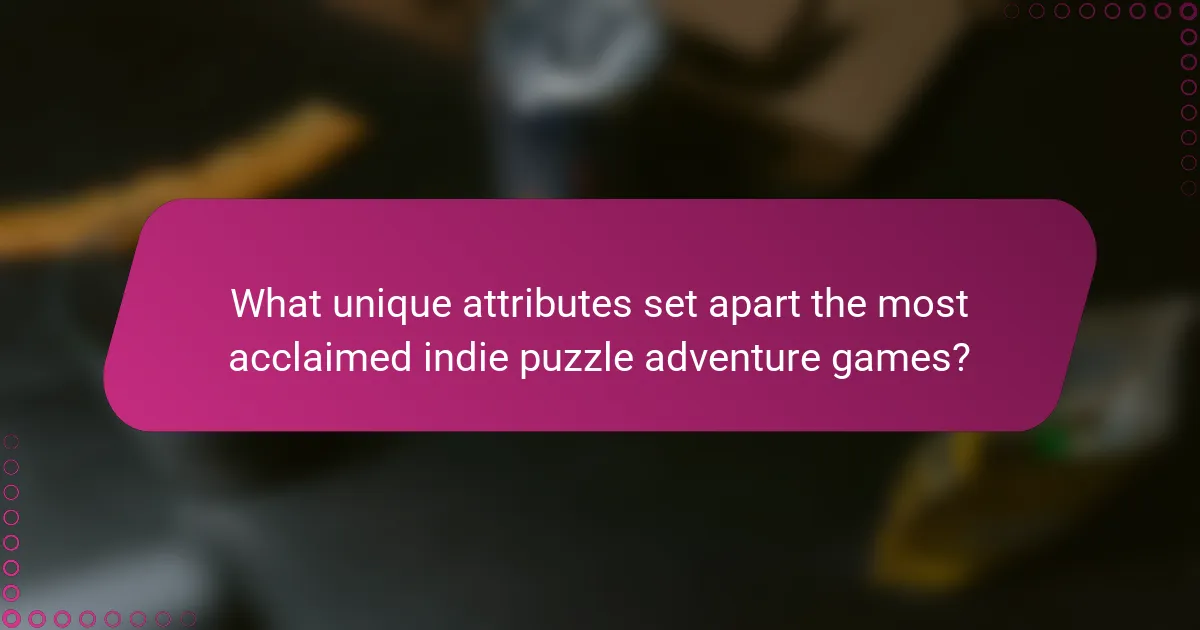
What unique attributes set apart the most acclaimed indie puzzle adventure games?
Unique attributes of acclaimed indie puzzle adventure games include innovative gameplay mechanics, distinctive art styles, and strong community engagement. These games often introduce unconventional problem-solving approaches, captivating visual aesthetics, and foster dedicated player communities. For example, games like “Fez” stand out for their unique spatial puzzles, while “Gris” is celebrated for its artistic direction. Community reception can significantly influence a game’s success, with player feedback shaping updates and expansions.
How do innovative storytelling methods differentiate standout titles?
Innovative storytelling methods set standout indie puzzle adventure games apart by enhancing player engagement and emotional depth. Unique narratives, interactive environments, and artistic styles create immersive experiences. For example, games like “The Witness” utilize environmental storytelling to convey themes without dialogue, fostering exploration. These methods often lead to positive community reception, as players appreciate the creativity and depth in gameplay.
Which game mechanics are rarely seen but highly praised?
Rarely seen but highly praised game mechanics in indie puzzle adventure games include time manipulation, environmental storytelling, and dynamic puzzles that adapt to player choices. These mechanics enhance immersion and engagement. For example, time manipulation allows players to solve puzzles by rewinding actions, creating unique gameplay experiences. Environmental storytelling enriches the game world, encouraging exploration and discovery. Dynamic puzzles that adjust based on player decisions create a personalized journey, fostering deeper connections with the narrative.
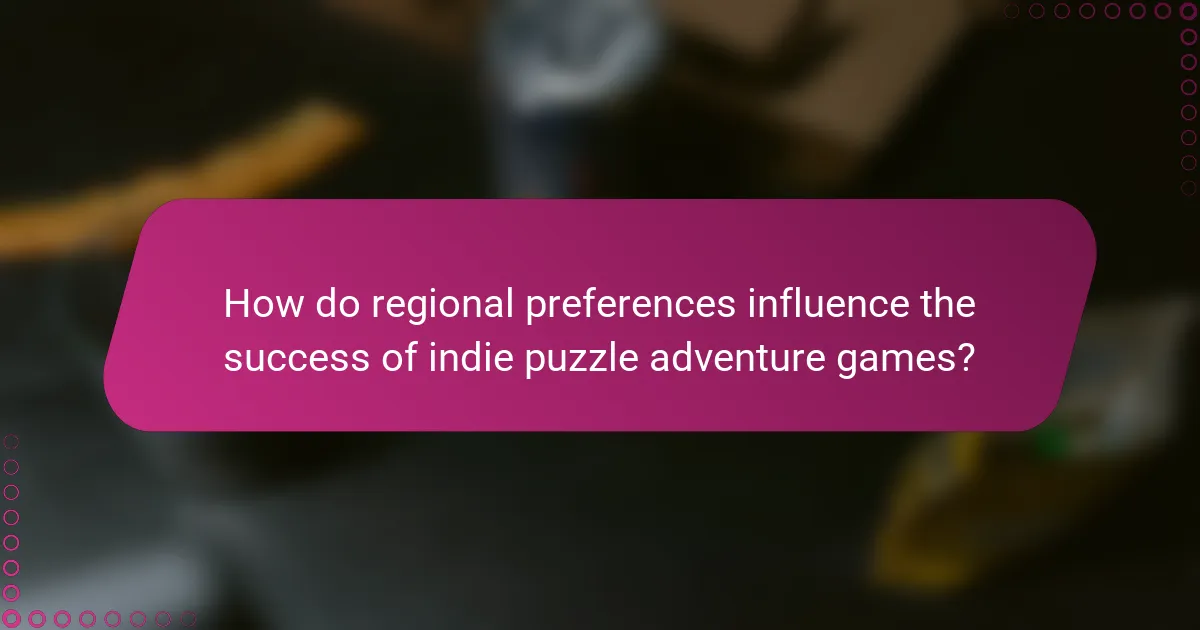
How do regional preferences influence the success of indie puzzle adventure games?
Regional preferences significantly shape the success of indie puzzle adventure games. Cultural tastes influence gameplay mechanics, narrative styles, and artistic choices.
For example, games that incorporate local folklore resonate better in specific regions, enhancing community engagement. Additionally, art styles that reflect regional aesthetics can attract a dedicated player base.
Moreover, community reception often hinges on localized marketing strategies. Tailoring promotional content to regional interests can lead to higher visibility and sales.
Understanding these dynamics allows developers to create more appealing experiences, ultimately boosting their game’s success in diverse markets.
What cultural themes resonate with players in different regions?
Cultural themes in indie puzzle adventure games vary by region, reflecting local narratives and artistic styles. For example, Japanese games often incorporate folklore and minimalist aesthetics, while Western titles may emphasize exploration and character-driven stories.
In Europe, themes of history and mythology are prevalent, showcasing rich cultural heritage. Additionally, community reception is influenced by regional preferences, with players in different areas favoring unique gameplay mechanics and storytelling approaches that resonate with their cultural backgrounds.
These variations highlight the importance of cultural context in shaping game design and player engagement. Understanding these themes can enhance the development of indie games tailored to specific audiences.
Which marketing strategies are effective across various markets?
Indie puzzle adventure games thrive on innovative concepts, unique art styles, and strong community engagement. Effective marketing strategies include leveraging social media platforms to showcase gameplay, collaborating with influencers to reach niche audiences, and participating in gaming conventions to build brand visibility. Engaging with players through forums fosters community reception and loyalty. Utilizing targeted ads based on player demographics enhances reach and conversion rates.
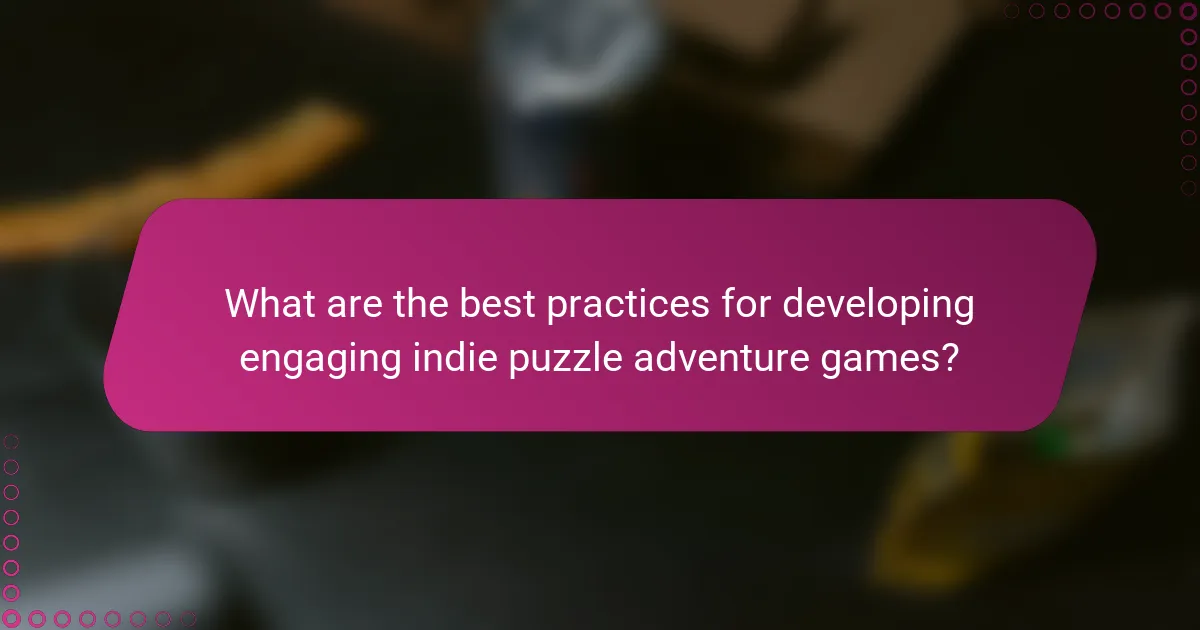
What are the best practices for developing engaging indie puzzle adventure games?
To develop engaging indie puzzle adventure games, focus on unique mechanics, captivating narratives, and striking art styles. Prioritize player feedback to refine gameplay and enhance community engagement.
Incorporate innovative puzzles that challenge players without causing frustration. Use diverse art styles to create immersive worlds, ensuring visual storytelling complements the narrative.
Foster a strong community by encouraging player interaction through forums and social media. Regular updates and transparency in development can build loyalty and excitement around your game.
Consider monetization strategies that respect players, such as fair pricing and optional content. This approach can lead to positive reception and sustained interest in your game.
What common pitfalls should developers avoid in gameplay design?
Developers should avoid common pitfalls such as lack of player feedback, overcomplicated mechanics, and poor pacing. These issues can hinder engagement and frustrate players.
Failing to provide clear instructions can lead to confusion. Ensuring intuitive gameplay is essential for player retention.
Neglecting community input can result in missed opportunities for improvement. Engaging with the player base fosters a stronger connection and enhances game quality.
Lastly, underestimating the importance of art style can diminish the game’s appeal. A unique visual identity can attract players and enhance the overall experience.
How can developers effectively incorporate player feedback into game updates?
Developers can effectively incorporate player feedback into game updates by actively engaging with their community and prioritizing suggestions. Regularly hosting surveys and discussions helps identify key areas for improvement.
Implementing a structured feedback system allows developers to categorize responses, focusing on common themes. This approach ensures that updates align with player expectations and enhances overall satisfaction.
Additionally, showcasing changes based on player input fosters a sense of community involvement. Highlighting specific feedback in update notes can strengthen player-developer relationships.
By maintaining transparency and demonstrating responsiveness, developers can create a positive feedback loop that drives innovation in indie puzzle adventure games.
What strategies can enhance community engagement and retention?
To enhance community engagement and retention in indie puzzle adventure games, developers can implement several effective strategies.
First, fostering a strong community through active communication channels, such as forums and social media, encourages player interaction. Regular updates and engaging content keep players informed and involved.
Second, incorporating player feedback into game development creates a sense of ownership among the community. This can lead to increased loyalty and word-of-mouth promotion.
Third, hosting events or competitions can further boost engagement. These activities encourage players to participate actively and share their experiences with others.
Lastly, offering unique in-game rewards for community involvement reinforces positive behaviors and strengthens player retention.
